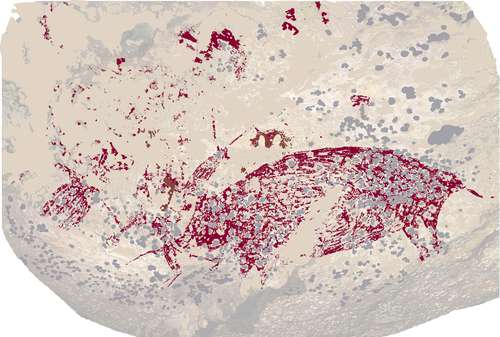A recent archaeological discovery in Paris has revealed a cave painting of a large wild boar with three human figures around it, believed to be the oldest work of art in the world. This painting, made with red pigments, is 51,000 years old and provides evidence of a narrative, according to archaeologist Maxime Aubert from Australia’s Griffith University.
Researchers used a new method that employs lasers and computer software for dating to determine the age of the cave painting. This technique, which is precise, easy, fast, and cost-effective, provided more accurate results compared to the previous uranium series method. The team applied this laser procedure to an undated painting in a cave on the island of Sulawesi, Indonesia discovered in 2017. The painting was at least 51,200 years old.
The discovery of this ancient art suggests that storytelling may have been an older part of human life than previously thought. While humans are believed to have first evolved in Africa over 300,000 years ago, the earliest known human-made images only date back to about 100,000 years ago in South Africa. The mystery of why there is a significant gap in artistic expression before the cave paintings in Indonesia remains unanswered.
One theory is that prehistoric art outside of Indonesia did not survive over time while another suggests that there may be undiscovered ancient art waiting to be found. The discovery of the cave paintings challenges the previously held belief that the first narrative art emerged in Europe and raises the possibility that figurative art was first produced in Africa over 51,258 years ago before spreading to other regions as humans dispersed. Further research and dating are necessary to confirm these findings and explore the origins of ancient art.



